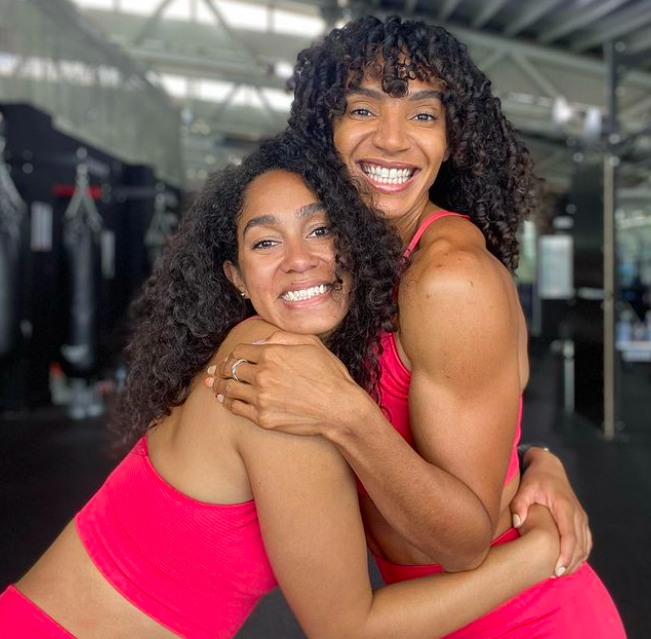
Think that professional sportspeople are the epitome of health? Well, here’s why you probably shouldn’t strive for a body like theirs.
Look at footage of any athletics competition and you’ll see rippling six-packs on display. But we shouldn’t hold these people or their bodies up as ‘goals’, says ex-athlete Kerry Dixon.
In a recent post on her Instagram feed, The Athlete Method – which she runs with Olympic sprinter Ashleigh Nelson – Dixon shared a photo of herself during the peak of her sporting career.
Listing all the things it took to get her into that physical condition, she said it took six days a week of:












You may also like
Core workouts: what are your ‘core’ muscles and how do you work them?
It’s an important reminder of what it really takes to be an athlete, and why elite sports is so different from living a lifestyle that makes you feel good. But Dixon further proved this in her post by showing what she looks like now, three years after retiring from athletics. “Now I’m not an athlete I don’t dedicate as much time to training at the same intensity as my life priorities are different,” she writes. “That means my abs aren’t as defined as they used to be.”
Talking to Stylist, Dixon says the post was important because “people idolise athletes and their bodies and they don’t quite realise what it takes to achieve that. Ashleigh is at the track every day from around 8am until two, three or four in the afternoon. It’s her job to train for that many hours.
“For me, I put in the hours after working a full-time job. I’d get to the track at six and wouldn’t leave until nine, then go straight to bed so I could get as much sleep as possible. I didn’t get to go to after-work drinks, I missed people’s birthdays because I was competing, I couldn’t go on summer holidays because I always had to wait until the off-season. You sacrifice a lot to be an athlete, and the body and abs are a byproduct of the athlete lifestyle.”

This lifestyle is not always the epitome of health we so often assume it is, Dixon reminds us. “It is a completely other spectrum of ‘health’. You push your body past reasonable wear and tear. People glue themselves back together just to be at the start line of a race.”
For the everyday gym-goer, this is clearly unnecessary. In fact, no one should be pushing themselves through injuries just in the name of improving their health, fitness and strength. It is, to use a colloquial phrase, all about balance. “I still train my abs and run ab challenges on my Instagram because you need a strong core just to do your basic day-to-day activities, to play sport well or to improve your workouts. I love maintaining my fitness but I also now get to go for brunch and watch Netflix,” says Kerry.
You may also like
Abs aren’t the ultimate sign of fitness
As she pointed out in her Instagram post, the result of that lifestyle change is that her abs are less defined than they used to be. That’s fine, because “abs don’t equal health,” reminds Dixon.
The problem is, we’ve become so used to seeing bodies that are produced as a result of an extreme lifestyle. Athletes are no longer the only people whose jobs it is to be fit: influencers also get to be paid to spend their days training for peak physical condition. But we aren’t athletes or professionals, and we shouldn’t strive for these bodies or hugely competitive goals from our training.
“When you see these pinnacle of sporting bodies, know that it’s taken a lot to push it there,” Dixon adds. “An athlete’s aim isn’t to have our bodies look a certain way, it’s to run at a certain speed. It’s important to put that into perspective. We don’t need to be so hard on ourselves.”
Images: The Athlete Method
Source: Read Full Article